I am designing a three-dimensional illustration using Matplotlib. All is working nicely, except that the (red) parametric curve gets the wrong zorder while the (green) parametric surface is drawn completely correctly.
Output generated by code below:

I know that Matplotlib has limited capabilities for accurately computing the zorder of objects, but since it can do it for the parametric surface, it seems like a bug in Matplotlib.
That said, is there any way to force correct z-ordering just to get things to work quickly? It seems that all I have to be able to say is that the right transparent blue plane is on top of everything else. However, putting a zorder argument into PolyCollection does not seem to have any effect, and putting an explicit zorder argument into the plot function which draws the read line will mess up its ordering relative to the green surface.
Is there a way to force the right blue transparent surface on top of everything? Here is the code I have so far:
#!/bin/env python3
from pylab import *
from mpl_toolkits.mplot3d import *
from matplotlib.collections import PolyCollection
from matplotlib.colors import colorConverter
from matplotlib.patches import FancyArrowPatch
rc('text', usetex=True)
rc('font', size=20)
fig = figure(figsize=(11,6))
ax = fig.gca(projection='3d')
ax.set_axis_off()
def f(x,t):
return t/2 * 0.55*(sin(2*x)+0.4*x**2-0.65)
c_plane = colorConverter.to_rgba('b', alpha=0.15)
N = 50
y = linspace(-1,1,N)
t = linspace(0,2,N)
yy, tt = meshgrid(y, t)
zz = f(yy,tt)
ax.plot(0*ones(y.shape), y, f(y,0), '-g', linewidth=3)
ax.plot(2*ones(y.shape), y, f(y,2), '-g', linewidth=3)
yt = 0.7*y
zt = f(yt, t) + 0.2*t
ax.plot(t, yt, zt, '-r', linewidth=3)
ax.plot((0,2), (yt[0], yt[-1]), (zt[0], zt[-1]), 'or')
ax.plot([2,2,2], [-1,yt[-1],yt[-1]], [zt[-1],zt[-1],-1], 'k--')
ax.plot(2*ones(y.shape), yt, f(yt,2)+0.1*(y+1), 'g:', linewidth=2)
ax.plot((2,2),
(yt[0], yt[-1]),
(f(yt[0], 2), f(yt[-1], 2) + 0.1*(y[-1]+1)), 'og')
ax.plot((0,2,2),
(-1,-1,zt[-1]),
(0,yt[-1],-1), 'ok')
ax.text(0, -1.1, 0, r'$p(0)=0$', ha='right', va='center')
ax.text(2, -1.05, zt[-1], r'$p(T)$', ha='right', va='center')
ax.text(0, -1.0, 1, r'$p$', ha='right', va='bottom')
ax.text(0, 1, -1.1, r'$q$', ha='center', va='top')
ax.text(0, -1, -1.1, r'$t=0$', ha='right', va='top')
ax.text(2, -1, -1.1, r'$t=T$', ha='right', va='top')
ax.text(2, yt[-1]-0.05, -1.05, r'$q(T)=q^*$', ha='left', va='top')
ax.text(0, 0.5, 0.05, r'$\mathcal{M}(0)$', ha='center', va='bottom')
ax.text(2, 0.1, -0.8, r'$\mathcal{M}(T)$', ha='center', va='bottom')
arrowprops = dict(mutation_scale=20,
linewidth=2,
arrowstyle='-|>',
color='k')
# For arrows, see
# https://stackoverflow.com/questions/29188612/arrows-in-matplotlib-using-mplot3d
class Arrow3D(FancyArrowPatch):
def __init__(self, xs, ys, zs, *args, **kwargs):
FancyArrowPatch.__init__(self, (0,0), (0,0), *args, **kwargs)
self._verts3d = xs, ys, zs
def draw(self, renderer):
xs3d, ys3d, zs3d = self._verts3d
xs, ys, zs = proj3d.proj_transform(xs3d, ys3d, zs3d, renderer.M)
self.set_positions((xs[0],ys[0]),(xs[1],ys[1]))
FancyArrowPatch.draw(self, renderer)
a = Arrow3D([0,2], [-1,-1], [-1,-1], **arrowprops)
ax.add_artist(a)
a = Arrow3D([0,0], [-1,-1], [-1,1], **arrowprops)
ax.add_artist(a)
a = Arrow3D([0,0], [-1,1], [-1,-1], **arrowprops)
ax.add_artist(a)
# For surface illumination, see
# http://physicalmodelingwithpython.blogspot.de/2015/08/illuminating-surface-plots.html
# Get lighting object for shading surface plots.
from matplotlib.colors import LightSource
# Get colormaps to use with lighting object.
from matplotlib import cm
# Create an instance of a LightSource and use it to illuminate the surface.
light = LightSource(70, -120)
white = np.ones((zz.shape[0], zz.shape[1], 3))
illuminated_surface = light.shade_rgb(white*(0,1,0), zz)
ax.plot_surface(tt, yy, zz,
cstride=1, rstride=1,
alpha=0.3, facecolors=illuminated_surface,
linewidth=0)
verts = [array([(-1,-1), (-1,1), (1,1), (1,-1), (-1,-1)])]
poly = PolyCollection(verts, facecolors=c_plane)
ax.add_collection3d(poly, zs=[0], zdir='x')
poly = PolyCollection(verts, facecolors=c_plane)
ax.add_collection3d(poly, zs=[2], zdir='x')
ax.set_xlim3d(0, 2)
ax.view_init(elev=18, azim=-54)
show()
